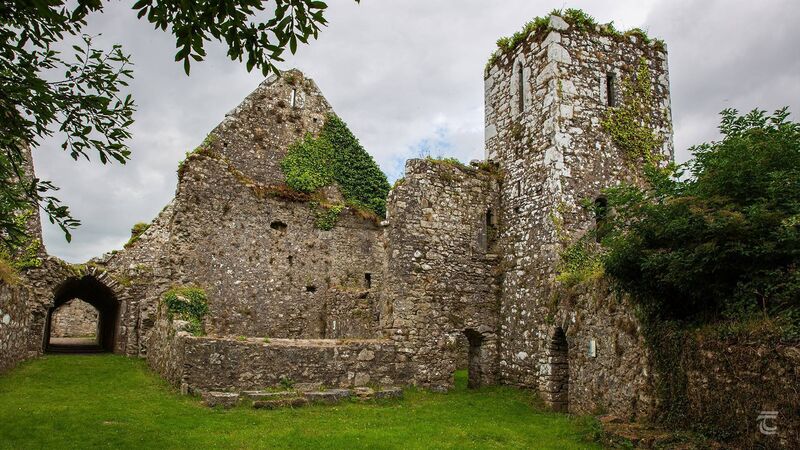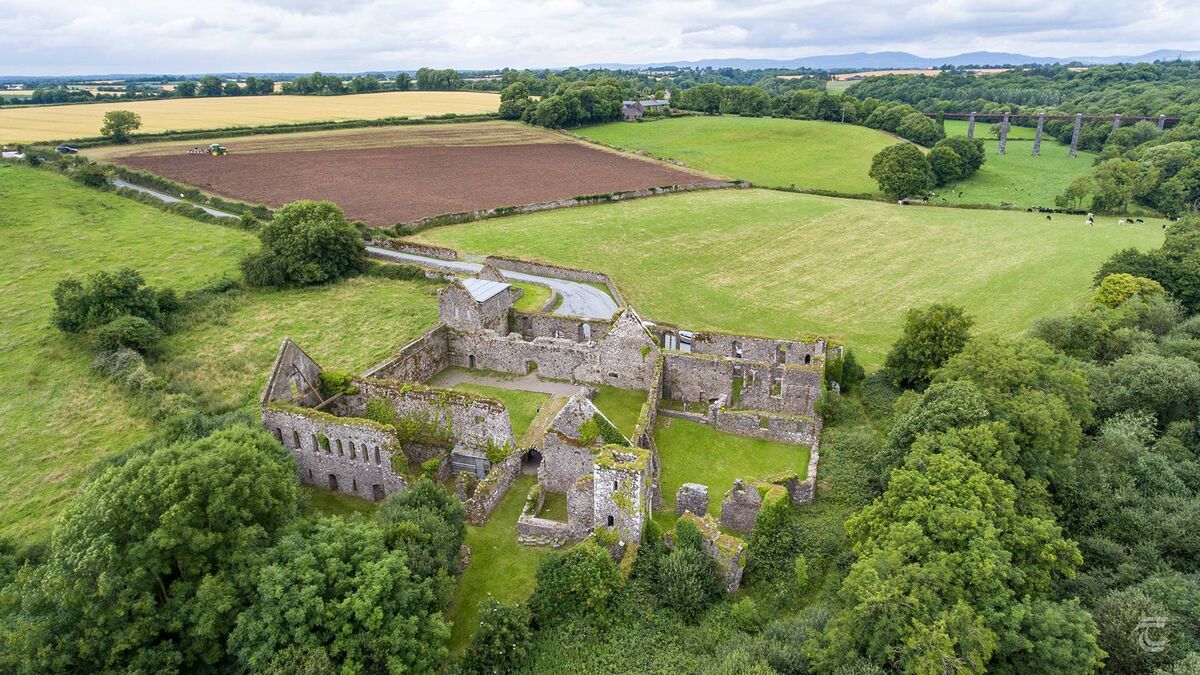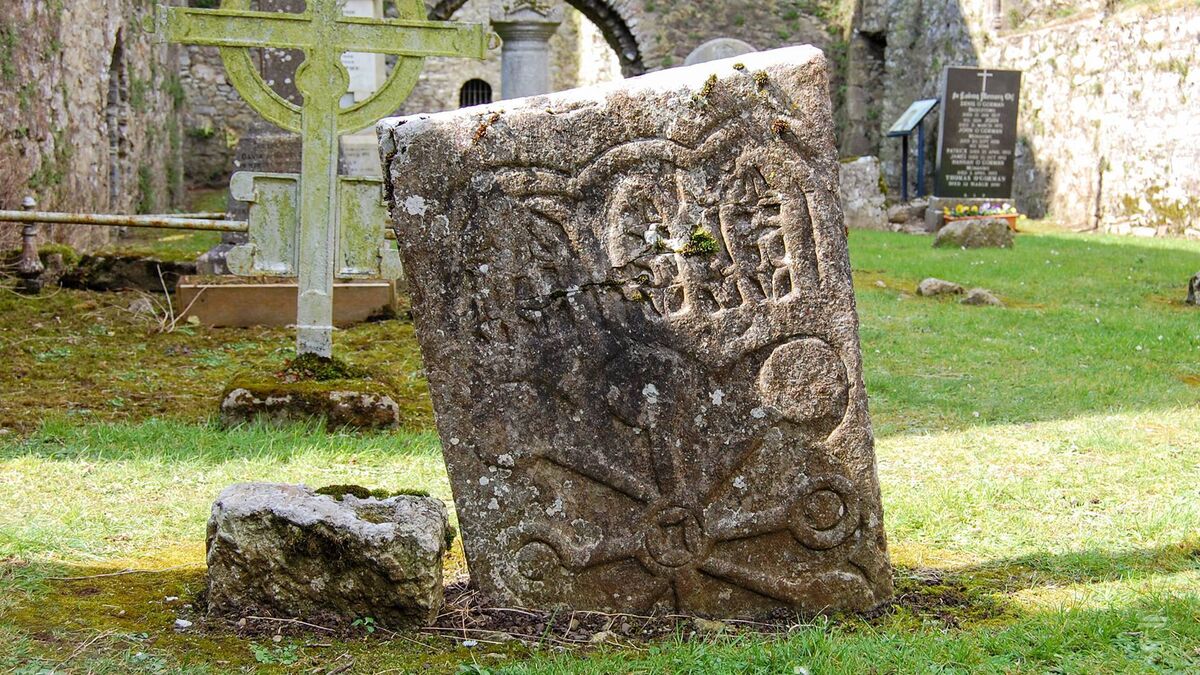Explore medieval ruins at Cork's Bridgetown Priory

Bridgetown Priory in north Cork. Picture: Neil Jackman/ Tuatha.ie
The north of County Cork is often overlooked by visitors but it has much to offer: from megalithic tombs to towns with medieval origins, the fertile lands around the Blackwater have long attracted people to settle. There is a wealth of significant archaeological monuments, representing millennia of stories.
It is an area particularly rich in medieval heritage. One of the best places to discover this is at Bridgetown Priory, an atmospheric rambling ruin nestled on the western bank of the Blackwater. The priory was founded in the early 13th century by Alexander FitzHugh Roche, the Anglo-Norman Lord of nearby Castletownroche. He donated the site to the Augustinian Order, with 13 carucates of woodland, pasture and arable land.
A carucate was a medieval unit of assessment, calculated by the area a plough team of eight oxen could till in a single season. One carucate very roughly equates to around 120 acres, suggesting that the original donation to the Augustinians at Bridgetown was approximately 1,560 acres. He also generously donated one-third of his revenue from his mills and fisheries and all tolls from the bridge that once crossed the Blackwater at the priory.
In these early phases of conquest and settlement, monastic orders like the Augustinians proved to be indispensable to the Anglo-Norman warlords. They helped to farm and administer the newly acquired landholdings, as well as providing spiritual succour to those who might have committed the odd sin in the process of that acquisition.
The Augustinian Order in particular flourished in Ireland after the Anglo-Norman invasions that began in 1169 and 1170. As well as the establishment of Bridgetown Priory the area suddenly sprouted more priories, friaries, abbeys and nunneries nearby in Buttevant, Fermoy, Ballybeg, Glanworth and Castlelyons. Bridgetown Priory was a wealthy and prosperous site for the first century after it was established. In the Papal Taxation of 1306 the value of Bridgetown was reckoned at the hefty sum of £40.

A number of the structures that make up Bridgetown Priory have survived in excellent condition, making it a fantastic site to explore.
The early 13th-century church contains an internal wall that separates the nave (where the general congregation sat during Mass) from the choir (reserved for the monks and clergy). There are signs of later medieval developments and modifications at the church, including the addition of a large two-storey residential tower. There is an interesting 15th-century tomb of the Roche Family in the choir: part of the decoration includes an upside-down shield with a fish on it. Having the shield upside down indicates the death of the bearer, and the fish was the emblem of the Roche family who were key benefactors of the priory.
Among the other medieval buildings and features in the priory are a 16th-century chapel, the prior’s domestic quarters, a room thought to be the kitchens, and a large refectory where the priors met for large communal meals and the calefactory (or warming house), apart from the kitchen, the calefactory was the only other building in the priory allowed to have a fire. There are also a number of historic graves on the site, some dating as early as the 13th century.

By the middle of the 14th century, Ireland had fallen into a period of strife and warfare as the resurgent Gaelic Irish fought the Anglo-Normans for supremacy, while the invasion of Edward Bruce and the Black Death made it an especially turbulent period. Bridgetown itself suffered during this time, and by the time of the Dissolution of the Monasteries during King Henry VIII’s reign in 1541 the site was noted as being largely in ruins, and its value only estimated at £13.
The last prior at Bridgetown was given a pension, and the site was granted to the English soldier Robert Browne. The site was sold a number of times before completely falling into ruin. Cork County Council began conservation works on the site in the late 1970s and now it is open to the public. The remains are extensive and you can easily find hours slipping by at this peaceful spot.
: You’ll find Bridgetown Priory at coordinates Lat: 52.149404, Long: -8.450306. It is approximately 4km south of Castletownroche and 12km west of Fermoy. About 2km south of Castletownroche, take a minor road to the west at Kilcummer. Then take the road to the south after half a kilometre.
There are gravel paths around the site, but changes in ground level, uneven surfaces and occasional steps mean it is a difficult site to access for wheelchair users. The site is well-signposted and free to enter.
- Neil Jackman is an archaeologist, travel writer, and owner of tuatha.ie — an online membership for people who want to explore more of Ireland’s wonderful heritage







